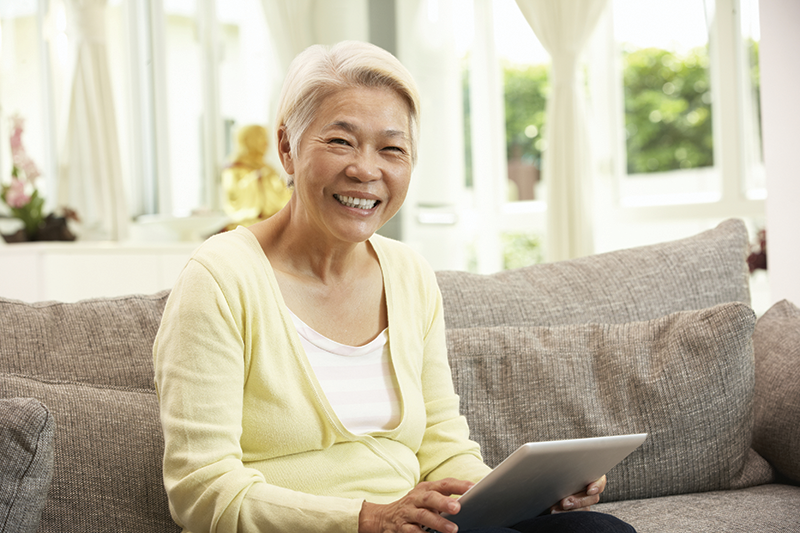The bad news: many home hazards that can cause serious injury or death in seniors are easy to overlook. The good news: those hazards often are easy to fix.
Falls are by far the biggest danger for older adults, but hot water scalds, stove burns, bathtub drowning and fires also are high on the list, says Dr. Kathy Menefee, executive director of the Riverside PACE program, which serves older adults living at home. Once hospitalized, elderly patients can suffer declines in physical strength and mental wellness within just 24 hours.
You can’t always prevent everything—especially slips and falls—but you can make the environment safer so there’s likely to be less of an injury if an accident happens,” Menefee says.
Here are 10 tips
Remove all tripping dangers
Top culprits are area rugs, which can slip if not anchored to the floor with double-stick tape and electrical cords. But any clutter is a risk, including shoes, clothes and books or even doorway thresholds of a half-inch or less in height, which can be tricky for someone with a shuffling gait.
Keep rooms brightly-lit
Older adults may need extra light to see clearly, especially on stairs (Light switches should be at the top and bottom of staircases.). Have flashlights handy in each room and use nightlights in hallways and on the way to bathrooms.
Set water heaters to 120 degrees or below
Seniors can burn quickly because they have thinner skin and may not register heat as well due to a health condition, medication or neurological damage.
Alter furniture
Raise chair heights and toilet seats and replace low sofas with deep cushions, if possible, to make getting up and down simpler. Consider putting mattresses on the floor so a fall out of bed won’t be dangerous.
Slip-proof bathrooms
Hang grab bars beside toilets and in showers and bathtubs, use shower seats as needed and cover hard surfaces with non-slip mats and strips. Also install locks on both sides of bathroom doors, in case a person falls and needs help.
Guard against fires, especially in the kitchen
Mount smoke detectors on every level of the home, pre-plan an exit route, store matches and fires out of reach and keep a fire extinguisher that’s less than 10 years old in the kitchen. Invest in an automatic shut-off device that will turn off stoves, ovens and appliances after a set amount of time (two sources: Amazon or Stove Guard International).
Beware of stairs
Check for sturdy handrails on both sides, fix frayed or ripped carpeting and put down slip-resistant tapes and treads. Install an electric chair lift—or a ramp on outside steps—if strength or balance is limited.
Organize daily medications
Sort pills into clearly marked boxes in a visible spot with reminder notes in other areas. If dementia is an issue, store extra pills in a separate, secure location to avoid possible overdose.
Medical alert system
Buy a medical alert system with a wearable pendant/bracelet. Also program emergency numbers into cell phones and post a written list by land lines.
Rethink storage
Move all frequently used items onto low shelves so seniors won’t have to stretch or climb to reach them.
Sources: U.S. Consumer Product Safety Commission’s Home Safety Checklist, Centers for Disease Control and Prevention, National Safety Council, Riverside PACE


